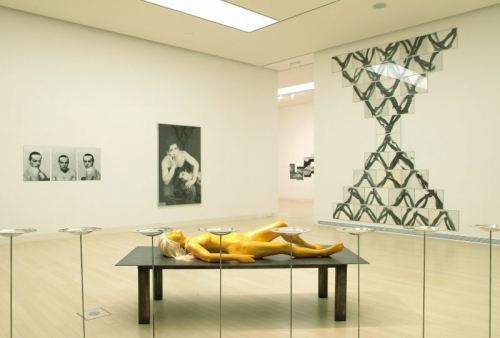At the beginning of her career, the artist found her own visual language; in her paintings, elements that appear as blurred, indistinct images, impressions that refer to the material world and fragments are assembled into visual essences, creating compositions that are at once personal and enigmatic. In addition to the dreamlike, surrealistic nature of her work, her paintings are fundamentally shaped by her method of painting: she places stencils on the laid canvas, and then drips paint over a tracing paper densely pierced with needles. The process first creates patches, tiny dots that are light and random – the artist then paints over, smears, and further shapes the paint as it seeps through. The painting takes a long time before the interaction of chance and deliberate influences create the final result from a patchwork of thin layers of paint. Blank surfaces also play a prominent role: she uses industrial cotton canvas as the base material for her works, which she simply undercoats with glue, retaining the neutral character of the canvas. Her motifs, which seem to float in the void, emerge from her engagement and struggle with the material. She incorporates into her paintings ‘objects’ chosen according to her instinctive visual standards, which become the vehicles of ‘something’ as they are painted. The motifs that appear on the surface of the picture are mostly taken from the artist’s immediate environment, which she takes out of their original cultural context and connects in a different way. This personal, painterly animation is inspired by a sense of the fading of memory traces, the trauma of loss.
József Készman

